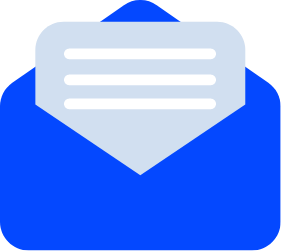


Is your legacy human capital management (HCM) up to scratch? It’ll need to be if you want to improve employee rewards.
According to global industry analyst Josh Bersin, the HR systems of most companies do not mesh with their current operations — and many are coming around to the idea of change. He points to research by Sierra-Cedar that shows 28 percent of companies plan to replace their core human resources management systems.
And for good reason. Most legacy HR systems no longer meet the needs of HR teams, especially in rapidly changing and expanding areas like employee rewards.
Below we discuss three specific ways your legacy HR system may be failing to meet contemporary rewards management’s needs and what HR leaders can do to rectify the situation.
Employee reward programs are more complicated than ever before. Benefits packages offered by many multinational corporations looking to compete for the best talent include much more than healthcare.
“Leading organizations are extending their total reward strategies beyond traditional compensation and benefit programs to include broader employee value proposition (EVP), wellbeing, talent development, work environment/ schedule/ location, and other employee experience elements,” says EY’s Martha Cook.
The more rewards companies offer, the more data streams they need to track —and legacy HR systems can’t keep up. That might not have been an issue in the past, but in an increasingly competitive space, HR teams need to understand the costs and opportunities of their total rewards program.
If HR teams can’t track and manage data from every reward program in one place, they risk creating a sub-par experience for employees.
One-size-fits-all rewards programs aren’t a good fit for today’s diverse workforce. Employees have different needs and expect their benefits to account for this. In other words, they expect them to be at least somewhat personalized.
Personalizing rewards also makes sense for HR teams, says Paul Devoy, CEO of Investors in People. “This idea of personalising reward and recognition is a far more convincing strategy than simply throwing money at good performance,” he writes. “Not only can this feel arbitrary, it also doesn’t show that you have gone beyond the business wallet mentality to think of a personal way to thank your people.”
The problem is that even if your legacy HR tool lets employees access their rewards, it almost certainly won’t give them the power to personalize rewards as they wish.

Do your employees know the full extent of their benefits? There’s a good chance they don’t and that could be a big problem.
“Communicating total reward is important; employees can be tempted to move employer for very little increase in actual salary and sometimes what you find is that they don’t appreciate the wider picture of how much their benefits they get are worth,” write Aon’s Helen Payne and Sarah L. Robson.
That’s why creating a total reward statement is vital. “Employees who have access to TRS (total reward statement) have a more transparent view of their overall package – with a clear overview of their companies’ investment in benefits,” explain Payne and Robson. “Sharing all this information in one place via TRS drives benefits and wellbeing engagement – and can help to boost retention.”
Creating a total rewards statement isn’t enough, however. You need to get it in front of employees.
Promoting total rewards programs is essential to their success, writes Jonathan Best, account director at uFlexReward. “The obvious channels of technology delivery remain – i.e., desktop, mobile, tablet – to cover all office based and remote based colleagues. While access to the platform should of course be available 365 days of the year, 24 hours a day, using the natural cycle of the calendar to encourage employees towards it can be adopted.”
So not only should your HR tool provide a total rewards statement to employees, it should be constantly accessible via whichever device employees use. Can your legacy system provide that?
HR teams won’t convince anyone to upgrade by complaining about old legacy systems. “That argument isn’t going to impress any senior executive,” says Mike Loukides, vice president of content strategy at O’Reilly Media.
Instead, they should focus on the way legacy systems are inhibiting their performances. “Legacy systems are frequently inflexible, and inflexibility has a way of costing a business money. Lost money means lost opportunities,” he notes.
When you show that improving employee rewards hinges on a new HCM, funding an upgrade becomes much more feasible.
Images by: Jud Mackrill, Christina @ wocintechchat.com
